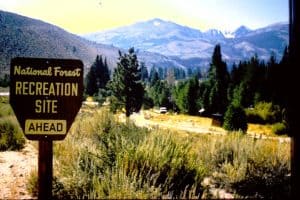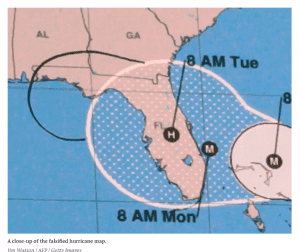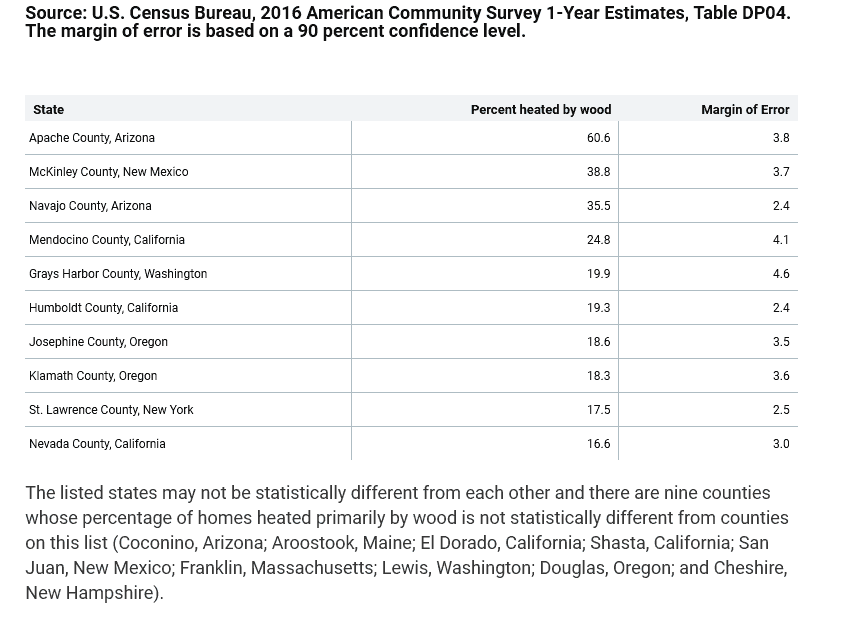
New lawsuit
In December, conservation groups sued the Forest Service to block a long-disputed land swap on Mount Hood, claiming the Forest Service is giving the owner of Mt. Hood Meadows and Cooper Spur ski areas a sweetheart deal on buildable land in Government Camp without protecting the north side of the mountain from further development.
Court decision
In early January, the Idaho district court vacated, at the agency’s request, a BLM decision to allow 16,000 sheep to graze on a 270,000 acre allotment in southeastern Idaho, after the judge blocked the Twin Buttes Allotment decision. A Freedom of Information Act request had revealed recent research that identified the area as an important sage-grouse migration corridor, which had not been disclosed by the BLM. Western Watersheds’ news release is here.
New lawsuit
On January 18, three conservation groups sued U. S. D. A. Wildlife Services and the U. S. Fish and Wildlife Service over Wildlife Services’ predator control program in Montana, arguing that its activities could threaten the long-term recovery of grizzly bears, which are protected under the Endangered Species Act. The lawsuit challenges a 2021 decision to continue the program and its associated consultation with the FWS, along with a 2020 Trump Administration policy. The complaint focuses on an alleged failure to consider the effects on connectivity between grizzly bear populations of its bear removal actions.
Court decision in Center for Biological Diversity v. Haaland (9th Cir.)
On January 19, the circuit court held that plaintiffs cannot sue the U.S. Interior Department for refusing to amend the 1993 Grizzly Bear Recovery Plan because the recovery plan itself was not a “final agency action” subject to judicial review under the Administrative Procedure Act. The article includes a link to the opinion, or here it is.
New lawsuit: Citizens Caring for the Future v. Haaland (D. N.M.)
On January 23, four plaintiff organizations challenged 32 oil and gas leases covering nearly 6,000 acres of land in New Mexico administered by the BLM’s Carlsbad Field Office. It targets “the Biden administration’s decision to uphold the Trump-era leases,” and “the administration’s failure to address the harm from expanded oil and gas extraction to the climate and regional air quality.” The news release includes a link to the complaint.
Court decision in Center for Biological Diversity v. U. S. Bureau of Land Management (D. Idaho)
On January 24, the district court held that BLM approvals for a 1600-acre open pit phosphate mine in southeastern Idaho failed to adequately analyze how the project might damage sage-grouse habitat and the extent of groundwater pollution with heavy metals. The Caldwell Canyon mine would replace another depleted mine to provide ore that would be processed into the herbicide glyphosate, a key ingredient in Bayer’s Roundup weedkiller, which is itself the subject of extensive litigation. The news release includes a link to the opinion.
New lawsuit: Monroe County Board of Commissioners v. U. S. Forest Service (S.D. Ind.)
On January 25, the county and three environmental plaintiffs filed a second lawsuit against the Houston South Vegetation Management and Restoration Project challenging the agency’s failure to comply with the court’s order in a prior lawsuit to evaluate the effects of logging and burning on Lake Monroe’s drinking water. The article includes a link to the complaint. That first lawsuit is now being considered in the 7th Circuit Court of Appeals, where both the plaintiffs and defendants appealed the original court decision.
Criminal conviction
A Montana resident pleaded guilty to mail fraud, and faces a maximum of 20 years in prison, a $250,000 fine and three years of supervised release for fraudulently certifying he was grazing his own cattle on a BLM grazing allotment. Grazing cattle owned by a third party requires payment of higher grazing fees, and he had submitted a false document showing ownership.
New lawsuit
The South Dakota Office of School and Public Lands is suing the Elm Springs Township Board of Supervisors for vacating ownership of section lines so that the public cannot use them to reach public lands, especially for hunting. In South Dakota, section lines are considered to be a public right-of-way for access to other parcels of land, but abuse of that system is apparently not uncommon, including a case involving the Black Hills National Forest. (We discussed a Wyoming lawsuit on “corner crossings” here.)
New lawsuit: Center for Biological Diversity v. Haaland (D. D.C.)
On January 26, plaintiffs sued over the 2019 decision by the U. S. Fish and Wildlife to not list the southern hognose snake under the Endangered Species Act. The species’ historic habitat includes fire-dependent forested habitat across the south, and the primary stressors affecting the species’ biological status are habitat loss due to fire suppression, timber harvesting, sea level rise, conversion of land to agriculture, and urbanization. The allegations include failure to properly model timber harvest. The article includes a link to the complaint.
New lawsuit: Center for Biological Diversity v. Haaland (D. Mont.)
On January 30, the Center for Biological Diversity, Western Watersheds Project and a professor at Montana Tech who authored the popular book “Montana’s Last Best River: The Big Hole and Its People” sued the U. S. Fish and Wildlife Service for failing to list the arctic grayling. The remaining fish are found primarily in the Big Hole River, which is in a valley surrounded by the Beaverhead-Deerlodge National Forest. They are threatened primarily by irrigation withdrawals for growing hay. The FWS has deferred to a conservation agreement implemented by the state which has, to date, not restored summer flows sufficiently to sustain grayling. The news release includes a link to the complaint.
The new year also found the Biden Administration making some important policy decisions related to past litigation.
On January 18, the Army Corps of Engineers and the U.S. Environmental Protection Agency published their final rule on “Waters of the United States” (WOTUS) in the Federal Register. The new rule, which will become effective 60 days after publication in the Federal Register, attempts to clarify which bodies of water, wetlands and waterways are protected under the federal Clean Water Act. The Biden administration rule will protect more wetlands and streams than the previous regulation issued under President Trump. However, the Biden administration rule is less expansive than the Obama administration’s WOTUS rule, which included isolated wetlands. Recent litigation was discussed here. This article discusses the case currently before the Supreme Court.
On January 25, the Secretary of Agriculture announced that the Forest Service would reinstate a rule to again prohibit road-building and timber harvest in unroaded areas of the Tongass National Forest. Lawsuits followed the last time the rule was imposed, and in 2020 after it was removed by the Trump Administration (discussed here). The USDA press release cited a directive from President Biden at the start of his term to review and address rules enacted under Trump that might conflict with environmental and climate aims laid out by Biden.
On January 26, the Interior Department issued a 20-year mining moratorium for over 225,000 acres of the Superior National Forest upstream from the Boundary Waters Canoe Area Wilderness in northeastern Minnesota. This includes an area that had been eyed for a potential copper and nickel mine by Twin Metals Minnesota, and has been the subject of litigation. This withdrawal decision came after the Bureau of Land Management and the Forest Service evaluated the environmental impacts of mineral development in the region.
The U. S. Fish and Wildlife Service has also made a couple of decisions for species found on national forests.
On October 18, 2022, the U. S. Fish and Wildlife Service proposed listing two salamander species found on the Sequoia National Forest under the Endangered Species Act and proposed designating critical habitat on national forest lands. The Service determined that the main threats impacting the Kern Canyon slender salamander include those posed by increasing grazing, recreation, fire, and climate change, and warrant listing the species as threatened, while the relictual slender salamander faces threats primarily caused by roads, grazing, fire, timber harvest, and hazard tree removal, and it would be listed as endangered. The Kern Plateau salamander (also found on the Inyo National Forest) was not proposed for listing. National forest plans were cited for protecting all three species. (The comment period closed in December.)
On January 30, the U.S. Fish and Wildlife Service protected the Sacramento Mountains checkerspot butterfly as an endangered species. The butterfly is found only in high-elevation meadows on the Lincoln National Forest in southern New Mexico. Only two small populations of the butterfly remain because most of its habitat has been degraded by grazing, development and motorized recreation.





